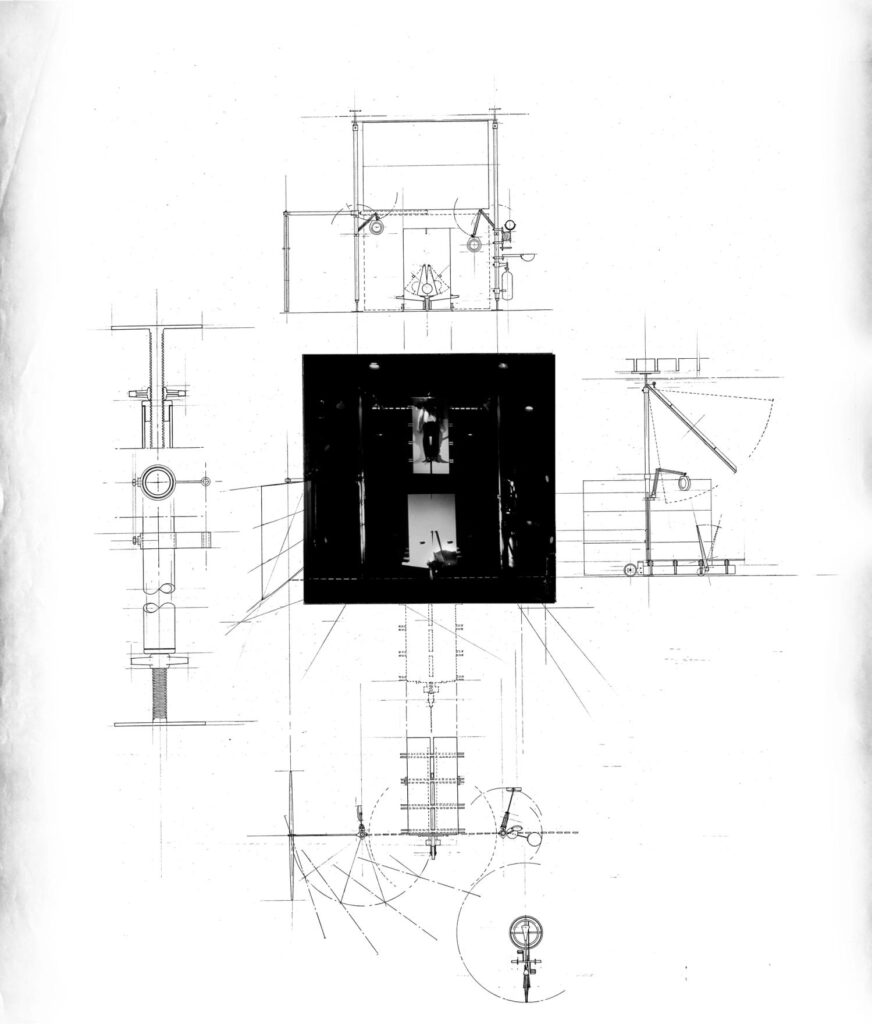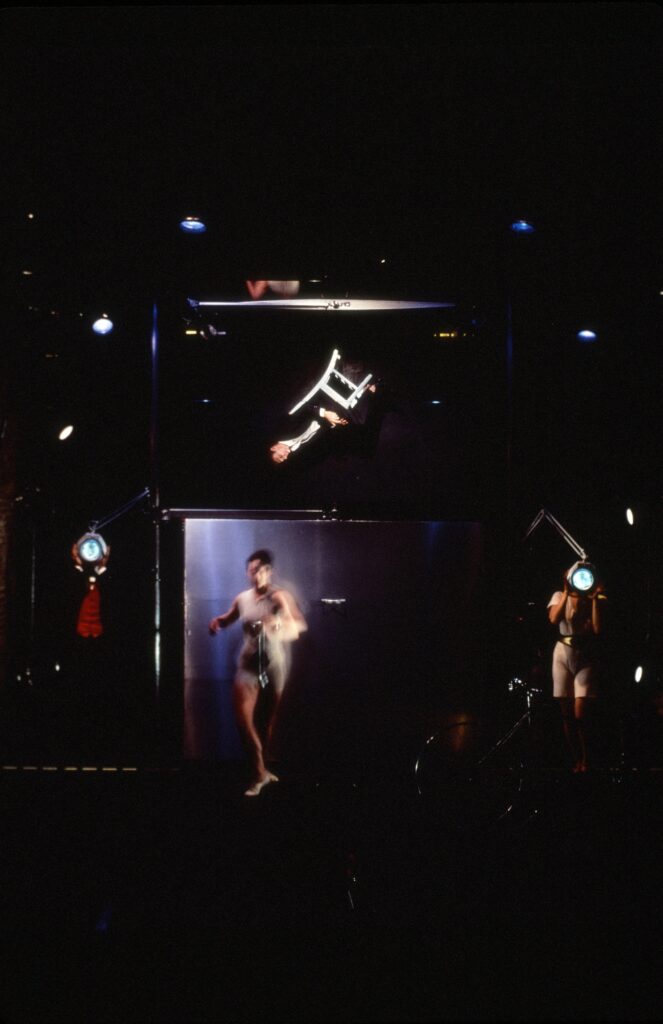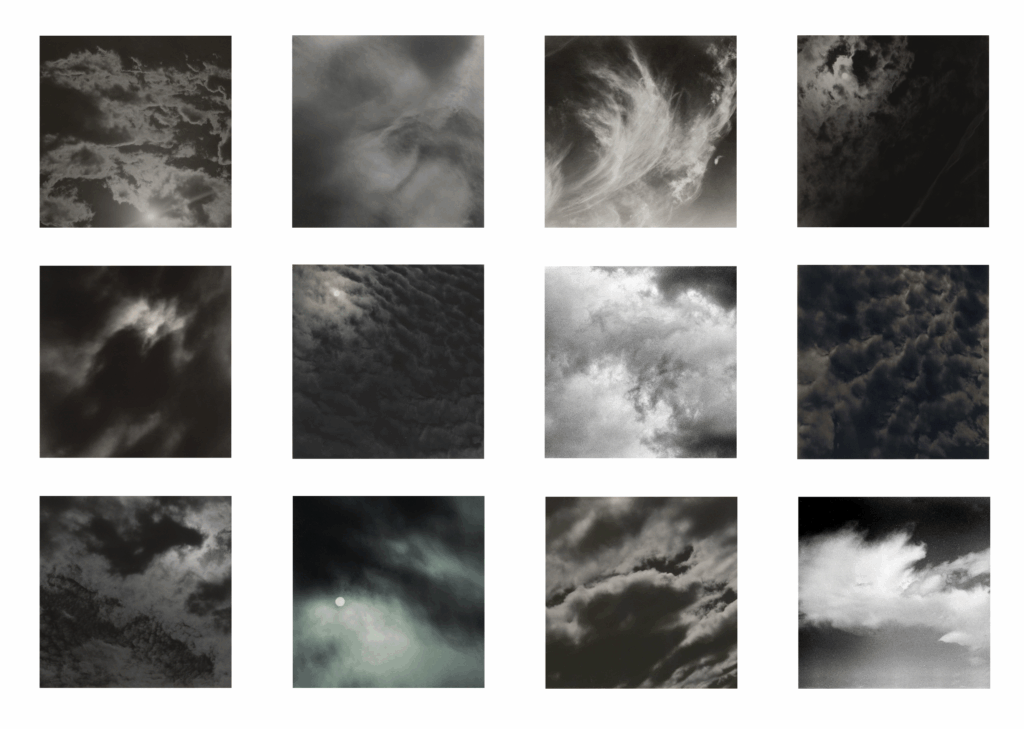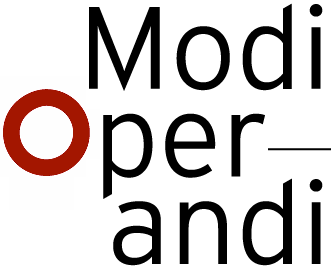INDETERMINACY AS METHOD
a- The Rotary Notary and his Hot Plate

Diller & Scofidio explored the duality of space and the translation of matter within space in their 1987 performance, The Rotary Notary and His Hot Plate. Rooted in a fascination with spatial contradictions – inside and outside, above and below, interior and exterior – the performance stages a choreographed ritual of attraction and pursuit between a bride and a bachelor.[3] Here, the human body is transformed into a mechanical object, challenging the fundamental relationship between body and space. The performance centers on the interactions between these two entities, examining their moments of connection and disjunction. Diller & Scofidio introduce the hinge as a critical mediator between spatial and physical expressions. It serves as both a point of resolution and contradiction, highlighting the inherent instability between man and his environment — particularly between man and space.

This Indeterminacy manifests through mechanical apparatuses, shifting perceptions and fluctuating tensions within the environment. The use of machinery, stage design and spatial composition generates a state of Indeterminacy, influencing how space is perceived and experienced. In a distinctly Duchampian approach to spatial contradictions, Diller & Scofidio identify the forces shaping spatial complexity, revealing Indeterminacy as an inevitable consequence — an active expression of spatial tension and interaction.
b- Equivalents

In ‘Seizing the Light’, Robert Hirsch describes Alfred Stieglitz’s Equivalents photograph series as ‘The first photographs intended to free the subject matter from literal interpretation’.[4] Stieglitz dedicated nine years of his life photographing a series of clouds, in different forms and reflections deliberately isolating his subject from its surrounding context. He believed that representation should prioritize the expression of the object itself rather than the conditions that define it.[5]
Here, Indeterminacy emerges as both the rejection of fixed spatial context and the openness to multiple interpretations of a subject. The strength of Stieglitz’s work lies in the iterative nature of his process — repeatedly capturing the same phenomenon in different expressions. By insisting on a self-defining representational process, the series establishes Indeterminacy as an inherent condition of artistic and spatial exploration.
Thus, Stieglitz’s work can be understood as an experiment in Indeterminacy. He constructs a fluid, mobile space liberated from topological constraints, emphasizing interpretation over fixed meaning. His visual approach creates a dialogue between represented space and the act of representation itself.
c- Simultaneity / Indeterminacy as Phenomenon
Indeterminacy, as a phenomenon, serves as both an analytical and generative tool in design. Its simultaneity allows for both the examination and implementation of territorial processes. Within this framework, Indeterminacy and simultaneity offer a unique means of understanding and defining spatial transformations, particularly in relation to landscape dynamics.
These phenomena challenge conventional notions of the environment. Objects and landscapes exist in a state of suspension — both individually and within their contexts. Their transcription in space reveals a multidisciplinary dimension, expanding their potential for interpretation. The case studies discussed earlier exemplify Indeterminacy as an essential design method, demonstrating how simultaneity enables an object to be understood as both a sequence of actions and the activities that shape it.
